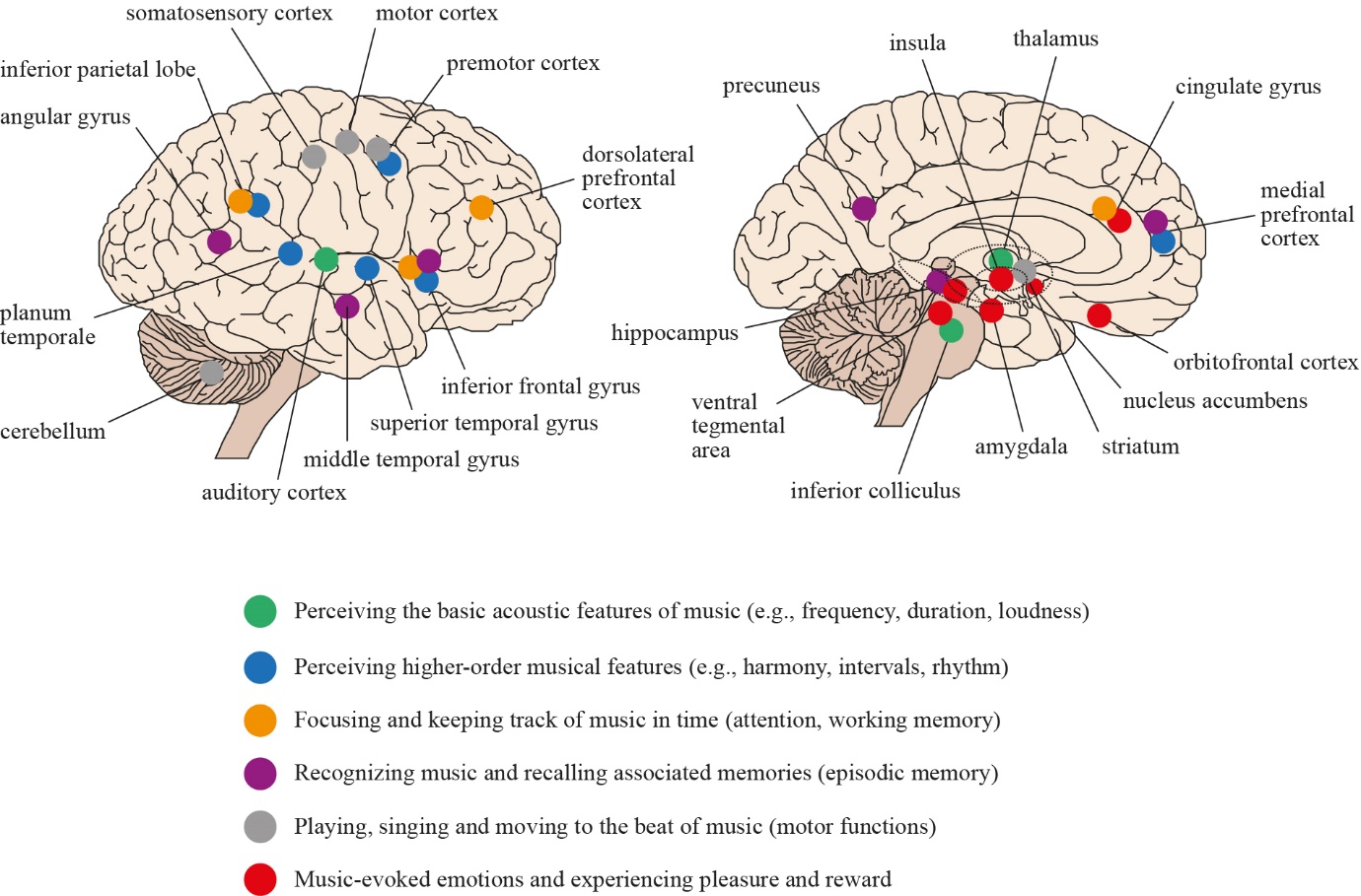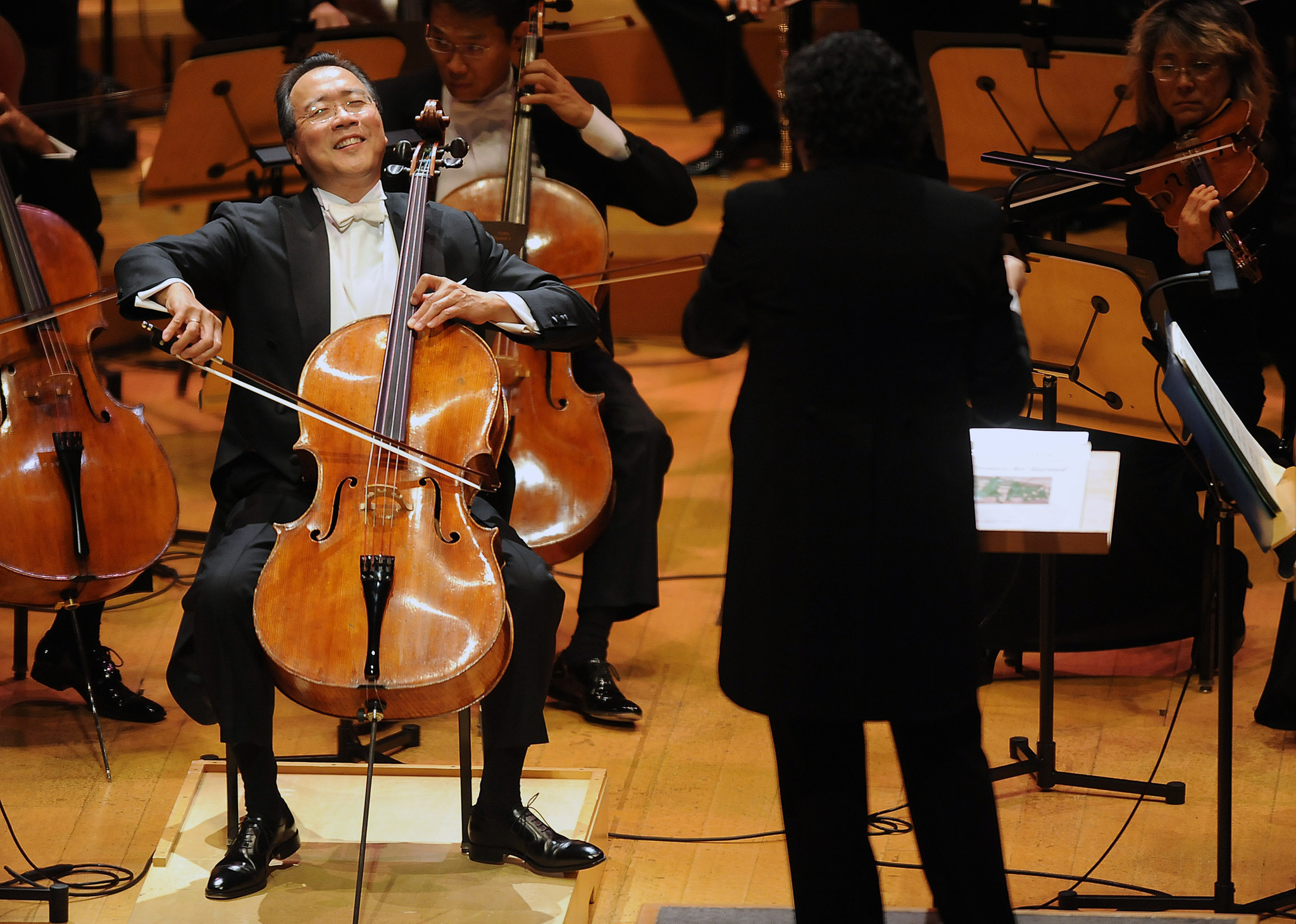
KAYT SUKEL: What are some of the biggest challenges of studying musical creativity, from a neuroscience perspective?
CHARLES LIMB: It’s not just music — artistic creativity in general is one of the toughest topics to study, because it’s an elusive thing. Creativity is made up of a very wide range of human activities that aren’t always so easy to connect together. By their very nature, art and creativity are expansive concepts with no real predictability. That means that it’s not really a natural fit to try to confine them to the constraints of a scientific experiment.
The other issue is that artists and scientists are very different kinds of people. For a scientist to try to design an experiment that feels natural to an artist while still maintaining scientific validity and control—well, that’s a very tenuous balance. It’s hard to design a study just right. You really need to work closely with artists to design something that will work.
It’s not just the act of playing or listening that matters, it’s having this musical dialogue that gets the brain going.
Is there something different about music? You say that artists and scientists are very different people, yet most scientists I know dabble in music.
There are certainly a lot of scientific people who engage in musical activities. But the tasks are different — meaning, the neurological requirements of doing something like playing jazz versus the neurological requirements of doing science are different. Again, it comes back to the tasks involved with creativity being so varied. The purpose of art and the purpose of science are vastly different. And those differences become very apparent when you try to design an experiment to bind them.
But that said, I do think there is something structurally, even architecturally, about music that makes it more amenable to analysis and linear thinking in some ways. It’s definitely got a lot of math in it. And that may make it easier to study empirically.
In a recent PLOS [a nonprofit publisher and advocacy organization] paper, you scanned the brains of musicians as they were having a “musical conversation,” so to speak. Why was it so important to have that kind of conversation, as opposed to just playing?
Music is about communication. One of the main goals is to communicate some message of significance using sound. It’s an abstract form of communication, certainly not the same as speech or language, but it definitely involves the sharing of ideas and experience. Musicians naturally enter this form of musical conversation when they play together. And I wanted to get at this idea of music as a universal language and see what that might mean in the brain.
The results were interesting. First, we definitely found that musicians use the language areas of the brain when they are doing that improvisation. And that’s interesting considering there was no talking — it was all music — and the activity in the brain was greater when the musicians were improvising versus when they just played memorized exchanges. It’s not just the act of playing or listening that matters most, it’s having this musical dialogue that gets the brain going. And it does so without the involvement of brain areas involved with semantic cognition and vocabulary. The idea that you can have these traditional language areas be highly active without the need for vocabulary is pretty cool.

So much work in neuroscience today is about networks and connections. And, historically, psychologists discussed creativity as a sort of different “wiring.” How is the work on the Connectome changing the way we think about creativity scientifically?
It’s a good question, but we don’t have a real answer yet. We have so much work to do to understand creativity in the brain. Our state of understanding is like we’re peering into the frosted basement window of a house and there’s a little corner that isn’t quite frosted. You can peer into the corner of that window and try to understand the lives of the people who live in that house. But you are only getting a really limited view.
At every level, whether we’re discussing the individual or society, international or multicultural perspectives, there are layers and layers on top of a fundamental human capacity to create. And how those layers are actually implemented in the brain…well, I don’t think we’re even close to being able to grapple with it yet, honestly. That’s why projects that tackle creativity are so important. They give us new looks into a really fascinating world.
What is the importance of emotion to creativity? What are we learning about how the two relate?
If music isn’t particularly good for propositional thought, then why do we need it? Why can’t we just use language for everything? It seems that music is exceptional at conveying emotion. And so it seems to me that emotion has to be a completely fundamental part of the musical experience, whether you are the perceiver or the producer. Emotion motivates composition, it motivates performance, it motivates the listener. It’s the reason why people seek repeated exposures to the stimulus. Everyone has that one song that you can listen to over and over again. We’re like rats who are tapping a bar that gives you some sort of drug relief. This suggests something about the brain’s hard wiring at a very primitive level for emotions.
So I wanted to look at emotion as an obvious co-factor for a model’s creativity because it can’t be that our brain does just one thing for every creative task. There must be different forms of the creative brain. But emotion was something I wanted to hone in on in particular. What changes in the creative brain when you use emotion as a target for your improvisation? Does it guide your improvisation? Does it change what you see in the brain?
We need to stop using lack of talent as a reason not to participate in art.
Does it?
Yes. In a nutshell, if you take musicians and ask them to improvise based on emotional faces, you see that emotion clearly affected the brain areas involved with that improvisation. It’s interesting that this one static form of creativity is starting to be dispelled and replaced with a more comprehensive, real-world idea that many things influence which creative form the brain may take. Emotion is likely one of those drivers because it directly influences the amount of prefrontal cortex expression and also seems to influence the brain’s reward areas as well.
Are we going to get to the point where we can one day teach people how to be creative?
My hope is that it will become clear, not just to parents and educators but also to policymakers, that art matters. Not just for entertainment but for the proper development of the brain. I hope to help dispel the idea of art as entertainment, and help people understand that art reflects a fundamental kind of neurological activity that’s linked to problem-solving, innovation, creativity, and new idea generation.
If we can make that connection for people, then the whole field of educational neuroscience will continue to expand and influence policies where we’ll start to say, “You know what? In order to have a more perfect society, we have to start with young minds and utilize these well-known pedagogical methods to help them learn creative behavior.” Expertise and training clearly matter. And I think that will be a prerequisite for any high-level creativity activity.

Cellist Yo-Yo Ma performs with the Los Angeles Philharmonic at Walt Disney Concert Hall, 2013.
Instead of putting creative people on a pedestal and saying that you are either born with the ability or not, we can help people evolve into creative people through many different exposures and different contacts—and with a lot of practice. It’s my hope that it will become commonplace.
So you don’t think you either are creative or you’re not?
This is a matter of both talent and expectations. Think of Little League. When you sign up your kid for Little League, the coaches aren’t evaluating your child to see if he or she is going to one day become Derek Jeter. They want the kid to have fun, get some physical exercise, socialize, and build teamwork skills. There’s no reason not to play an instrument just because you won’t grow up to be Yo-Yo Ma. It is legitimate to believe that there are significant brain benefits involved in engaging in creative activities even at a very amateur level. We need to stop using lack of talent as a reason not to participate in art.
This interview was first published by the Dana Foundation, January 27, 2017.

KAYT SUKEL is a science journalist and author who has written stories about out-of-body experiences, fMRI orgasms, computer models of schizophrenia, the stigma of single motherhood and why one should travel to exotic lands with young children. Her first book, Dirty Minds: How Our Brains Influence Love, Sex and Relationships takes on the age-old question “What is love?” from a neurobiological perspective. Her new book, The Art of Risk: The New Science of Courage, Caution and Chance is an investigation into the science of risk-taking. Kayt lives outside Houston, Texas.

Add new comment